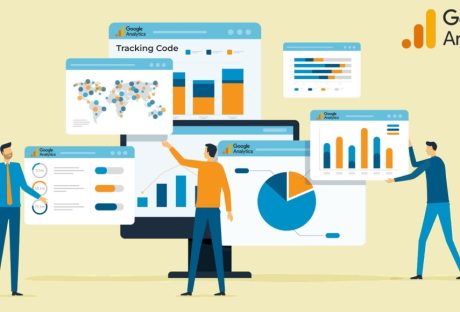Blog

Are There More Doors Or Wheels In The World?
Having silly debates on the internet and having heated arguments and virtual bloodshed over it has become pretty common nowadays. Very few seem to have a common ground regarding such heated debates. However, one such debate that gained comical notoriety was this question - are there more doors or wheels in the world? Well, if you want to find the answer to this question, then you are in the right place. If you want some solid evidence as to which option is the right answer (unbiased of course), then read this post till the end. How Many Doors Are There In The World? When it comes to the viability of what will be considered as how many doors are there in the world for this poll, all doors are considered here. This includes, but is not limited to various forms of doors (even the unexpected ones). For this debate, I will be considering doors as “doors” that connect two spaces together. It can be between spaces. Therefore, the doors in your room, windows, oven, car, house, and everything that resembles one will be taken into consideration. This includes: Residential household doors Vehicle doors Toy vehicle doors (only if openable) Cabinet doors Drawer doors Cupboard doors Bunker doors Windows doors Oven doors How Many Wheels Are In The World? What type of wheels must be considered for this poll is subjective. However, for its discussion on this post, all wheels will be considered here. This includes actual wheels that are present in vehicles, along with other wheels present in car toys, trolleys, and more. For the sake of simplicity, any circular wheels that help in moving objects around will be considered as a wheel. In addition, circular objects that simply rotate might also be considered wheels, though this is subjective. This includes the wheels in hand-drawn carts, pulleys, and lots more. Therefore, for this discussion, such wheels in “how many wheels are in the world” will be taken into account: Vehicle wheels Toy car wheels (Hot Wheels anyone?) Cartwheels Skateboard wheels Wheelchair wheels Lawn Mower wheels Gear cogs and wheels in machines Since When Did People Care About Debate This Anyway? People will always care about any pointless debate on social media since they are fun and you get to flex your knowledge online. The debate about how are there more wheels or doors in the world was first started online on Twitter. It was first started by Ryan Nixon from New Zealand. He randomly made a poll post on Twitter asking users “is there more doors or wheels in the world?” This Twitter poll was posted on 5th March 2022. However, since it's social media, who knew this question would cook up such a storm? Even though Ryan has only 2,000 followers on Twitter, more than 220,000 votes were cast on this poll. This left Ryan flabbergasted and surprised at the overwhelming response. Later, many claimed that this poll spread like wildfire, and it was shared with thousands of people on other social media platforms as well. Sharing this post on WhatsApp and TikTok also made it pretty popular as well. So, according to Ryan’s poll, are there more wheels than doors? Doors VS Wheels: Who Wins In This World? So, in the end, who is the winner of the debate: are there more wheels or doors in the world? The answer is - there are more wheels in this world than doors. According to the original Tweet made by Ryan, the poll also provided the same answer. As per the results of this poll, 54% of the votes said wheels while 46% said doors. When it came to the question, there was an entirely new war brewing regarding this question. Those who said wheels argued that each car has four (or more) wheels - including the millions of toy cars as well. In addition, each door has wheels on them - the door hinges. Here, one even argued that each door is a wheel in itself, but it’s not the same the other way around! On the other hand, many “Team Door” followers claimed that doors can be mystical as well - referring to the door to our hearts and minds as well. While each person has various opinions regarding this question, we should be happy with the answer provided by the poll for now. Frequently Asked Questions (FAQs): Many people interested in finding out if are there more doors or wheels in the world answer have asked various questions. Here are my answers to those questions. Q1. What Does Team Doors VS Team Wheels Mean On TikTok? Ans: When people asked about “are there more doors or wheels in the world statistics” through TikTok, the opinions of people differed. Those who thought that there were more wheels joined Team Wheels. On the other hand, those who thought that there are more doors in the world joined Team Doors. Q2. Do Doors Have Wheels On Them? Ans: Yes, it’s true that doors have wheels on them. This statement is true because all doors have hinges in them. You can consider hinges to be a wheel since they are circular in shape and rotate too! Final Verdict: Are There More Doors Or Wheels In The World? So, are there more doors or wheels in the world? The answer is there are more wheels in this world compared to doors. This is because there are millions of automobiles in this world, with all of them having two to six wheels. Plus, the greatest argument ever here is that all doors have wheels on them - the door hinges. If you want answers to such silly (but interesting) debates, why not start a fire yourself in the comments below? Read Also: How to Check If Your Car Tires Are Good? Why Should you Consider Security Doors for Your House? How To Choose The Best Wheels And Tires For Your Vehicle?
READ MOREDetails
How To Learn The Value Of Your House
There are many reasons to want to value a house. A new addition to the family may need additional rooms, a work promotion in another location, or even just time for a change may require the home to be sold. Another reason to value a property is to identify a person’s current financial position. This may be necessary for those starting a business or needing additional finance. How do people learn the value of their houses? Here are three ways. Top 4 Ways Of Learning The Value Of Your House 1. Online Valuation Tools One of the easiest ways to get a valuation is to use one of the many online valuation tools available. They use public data to price your home. These tools use the automated valuation model (AVM). The valuations are based on data retrieved from public records like deeds of ownership, property transfers, and tax assessments. A mathematical formula is also applied, taking data from recent sales in the area. The challenge with relying on AVMs is that they’ll value every property, regardless of the available data, possibly giving an inaccurate value. To effectively use an AVM, do it from a real estate site that also includes a ‘confidence score.’ This value means a professional has checked the result from the AVM and given a score based on how close it is to market value. Any AVM plus a confidence score over 90% can be considered. 2. Comps One of the most common ways to get a current value for a house is to check out recent sales in the same area. Take a look around the neighborhood at comparable homes. These are known in the industry as ‘comps.’ When made public, the results of these sales can be an easy predictor of the values in the area. An ‘apple for apples’ approach needs to be applied here. If the house next door is a little more run-down but has an additional bedroom, that value isn’t a good comparison. If one down the road, with an equal number of rooms, was renovated around the same time, that’s a closer valuation. The way to get the best valuation for your home is to find four comps — two at the higher price range and two at the lower. Go for something that’s somewhere in the middle. Remember that values change quickly; any sale over three months ago may not match the current market. 3. Professionally Appraised The most expensive but arguably the most accurate way to value a home is to get it professionally appraised. These people have seen hundreds to thousands of comparable properties and can give you a correct value. A 2018 survey revealed that ¼ of US homeowners valued their properties this way. Lenders will require an appraisal before approving a mortgage; however, they’ll want it done by their own appraisers. Appraisers may even suggest changes that can be made to increase the property value. A professionally presented pre-purchase appraisal by a reputable appraiser makes it easier for the potential buyer to decide. This is one task that they don’t have to do. Appraisers are independent contractors. They get paid per appraisal; they don’t earn commission and therefore offer unbiased opinions. 4. House Valuation Made Easy Using an AVM is the most convenient way for a person to value their home; however, it’s possibly the least accurate. Spending the time to compare recent sales on comparable properties in the area is a closer way to get a more accurate price. Choosing a value mid-range of these is the best way. Unbiased professional appraisers will provide the most accurate value, but at a cost. Whether using an AVM, checking out local comps, or hiring a professional, there is one surefire way to know the value of a house. The value is whatever someone else is willing to pay for it! Additional: 5 Ways A Home Maintenance Plan Can Prevent Disaster How You Can Increase the Value of Your Home with Stone Veneers 6 Easy Ways To Make Your Home More Appealing To Buyers What Qualifications Do I Need to Have to Get a Home Mortgage?
READ MOREDetails
Zoro.to Review – Watch Anime Online For Free | Top 10 Alternatives To The Site
If you go and visit this website, you will see the page claiming that their site is legit and safe to use. They claim that it is absolutely a free website that features anime shows in both subbed and dubbed formats. “Zoro.to anime” also says that they only feature animes that are in High Definition quality. All of these claims sound good but are they really true? To find out the truth, I went and tried to visit their website. The operative word being "tried" here. Before their page could even load properly, my PC alerted me that there were security threats related to this website and prevented me from opening the page. They also have a zoro.to app as well, which is also a threat to the security of your phone, so you better not install it. In this article, I will instead provide you with a guide to the top ten alternatives to this website. The Top 10 Alternatives To The “Zoro.to” Website Here is a list of the top alternative sites that you can use to watch anime: Crunchyroll Crunchyroll has to be one of the best anime streaming platforms out there. Their website interface is clean and very easy to navigate. Their website features animes of varying genres, a few examples of which would be Sports, Supernatural, Thriller, Fantasy, Comedy, and so much more. There are both subbed and dubbed versions of most of the animes that get hosted on the site. The videos are all uploaded in high and premium quality. The only catch to the site is that it is partially free. One gets a 14-day trial version of the platform, and then too, not all of the titles will be available for you to watch. But still, the site has quite the appeal, right? Also, it is to be kept in mind that one needs to sign up on their site to enjoy the trial version. 9anime The 9anime website is free to use, unlike the Crunchyroll platform I mentioned earlier. There is no catch to this one, I promise. The interface of the website is very easy to navigate as well. This is the best alternative to zoro.to as well. One cool feature of this website is that it has a very high loading speed, which means that – the time it takes to load the videos on this site is very less. You won't get interruption of “video-buffering” screens while you stream videos on this site. On the left-hand side of the site, there are wide categories of options to select from. There are options like genres of animes; the ongoing option lets you view episodes of the current running animes. AnimeHeaven This is another one of the free anime streaming websites that lets you watch anime without requiring any form of payment. This site features shows like Black Clover, One Piece, Boruto, and so much more. The anime episodes are all uploaded in both subbed and dubbed formats. Additionally, this website does not even require an individual to sign up for streaming content on their website. You can directly enter the title of the anime that you want to watch if you have something in mind, else, you can select the "Random" option on their website, which will recommend you an anime title of any genre. It is a fun way to discover new anime! Gogoanime This website is free as well, but it does require you to sign-up on their site if you want to watch anime. This website does not have malware like zoro.to. The GogoAnime site mainly features lots of English-dubbed anime, even though some people (like me) would be totally against it. There's no point in watching anime if not in their original language. I genuinely prefer the subbed ones only. On their homepage, you can navigate to your favorite anime easily as they have a search option on their website. They also have a separate section that only contains Anime movies, which makes it convenient. AnimeDao This anime website is best for people who want to engage in conversations about their favorite anime shows. It has a very active discussion forum. This is the ideal platform for anime enthusiasts. The website's interface is haphazard at first view, as the homepage seems crowded at first glance. Nonetheless, convenient as well. There is a little "hot" sign that appears above titles that are currently trending. This website also shows the times during which a specific episode of an anime got posted. Additionally, this website features all of its videos in premium and high quality (720p and 1080p). Tubi.tv The website is free to use and has easy navigation as well. But the catch is that this site bombards you with ads, which can get albeit a bit annoying at times. Also, we need to keep in mind that we are searching for free sites to watch anime on, so there are bound to be a few ads. The platform is supported across all devices and hosts a wide genre of shows on its site as well. This website's one great feature is that it hosts age-old anime titles as well. Tubi.tv is the ideal site if you are an avid watcher of classic old anime shows. This website also forms a great alternative to zoro.to. KissAnime This is one of my favorite sites to watch anime on. This website hosts every genre of anime that you can imagine, from classic to new ones. They upload anime videos in premium quality as well. Their website hosts animes dating back to the classic ones and also uploads the recent ones very quickly as well. There is a search option on this site that will aid you in quickly searching for the title that you want to watch. The website also has an option of selecting another server if one is not quite working for you. AnimeFreak This is another amazing site that provides users to stream anime for free. A user has the option to watch either the dubbed or subbed versions of the animes -- whichever they prefer the most. If one encounters any form of problem while navigating their site, then they can reach out to the 24/7 customer support, that their site features. Additionally, their website also features mangas up on their site unlike zoro.to. While you are at it, you could indulge in reading some feel-good mangas as well. Chia Anime Image Source: i0.wp.com The Chia-Anime platform offers its users content of premium and high quality ( the episodes are all available in 1080p formats). There are more than a thousand titles that are available for streaming. Their site has a very easy interface as well that makes it really for a user to navigate their site. They very frequently update with new and current content, so you know that you are never going to run out of content to watch. They upload the current episodes on their site just one hour after they have aired in Japan. This anime streaming site has been present ever since the year 2009. Tip: If you are still wondering if zoro.to safe or not, then no, it ain’t. Masterani The Masterani website has a very neat and clean interface as well. It features all of the popular and old animes as well. Their website provides animes for users to watch at absolutely no cost. Their website also has an option on their website, which is labeled "Schedule," where one can get to know when they are going to release an episode of an anime. They also have a "popular today" section, where the ones currently being watched the most get featured on their site. Tip: In the first section of the article, I did mention what is zoro.to. You should go back and read my review in case you have missed it. Frequently Asked Questions (FAQs): 1. Why Do Free Anime Sites Provide Their Services And Not Charge At All? Ans: Well, they still earn by running ads on their site. When you visit these free anime streaming websites, you will see that they bombard you with a thousand sponsored ads, that is because they are earning money from it. 2. Are Free-Anime-Streaming Sites Illegal? Ans: They are illegal, as a matter of fact. They don’t have the rights to the episodes that they are hosting on their site, which makes it very illegal, but does that stop you from indulging in them? No. And not me as well. 3. Is Zoro.to Safe? Ans: That site is a nest of malware and viruses, as I did mention in the first section of the article. To Wrap It Up! They were all of the best alternatives that I could find for zoro.to. You can go and try these sites out. Thank you for reading up till here. I hope you found this article useful. Let me know in the comments your thoughts on the same. Read Also: Roobet Review: Is It Legit Or Not? Fake Or Real? Ogzilla App And Gaming Website Review: Is It Legit Or Scam? Zinmanga Review: Is It A Worthy Platform For Manga Stories? What Is Reaperscans? Is It Illegal? How To Find Comics On It?
READ MOREDetails
Why Should You Enroll In A Part-Time Degree?
While millions of us want to learn new skills and enhance our employability, education takes time, money and effort to pursue . Thankfully, there are more options than ever for would-be students to dive into degree topics at their own pace. Have you ever considered enrolling in a part-time degree, for example? It’s a common misconception that you need to pursue a full-time or in-person degree to get the most out of your studies. In fact, it’s becoming increasingly advisable for people to study part-time in order to maintain balance in the other areas of their life and work. Whether you want to study nursing, computer engineering, animal care or another subject, there's likely to be a part-time course or two that will give you the insight and practice you need to thrive in your field. Here are a few fantastic benefits of studying for a part-time degree that might surprise you: There’s A World Of Subjects And Specialties Out There It’s a further misconception that part-time study is restricted to a few different fields and subjects. While some people want to dive right into medicine or law right away, there’s no harm in slowing down the pace a little if you need to. For example, it’s entirely possible to learn to become a high school teacher, an immigration lawyer or a social worker through part-time education. It’ll require extended study time on your part if you have to balance life and work alongside it, but providing you study with a reputable body, the end results are nearly identical. There's an unfair misjudgment that part-time degrees don't go as 'deep' as the 'real thing'. This really isn't the case! In fact, many students prefer the pace of part-time learning as it gives them a chance to appreciate the material and industry in-depth. Part-Time Gives You More Time When studying full-time, you are largely up against the clock when it comes to meeting deadlines and ensuring you understand all the material you're provided. That can prove to be highly stressful! While lots of people thrive under pressure, spreading the work across a part-time course could help you gain a closer appreciation for your subject matter and, therefore, your wider industry. If you have more time and space to study, you’ll have the chance to read and research more in an extended timeframe. This means you could effectively benefit from double the time full-time students are expected to use to their advantage. That doesn’t mean there’s any competition between full-time and part-time students, nor does it mean that there’s any kind of correlation between graduation success. What it does mean, however, is that students who want to use as much time as possible to succeed in their chosen fields can do so, without fear of the time crunch. You Can Build Your Life Around Part-Time Study A major problem that many would-be students face is that ‘life gets in the way’. People who raise children and work full-time may want to improve their career prospects and earn more money, but simply don’t have the time or maneuverability to study full-time. That’s where part-time study, and online courses, can come in very handy. Part-time courses and degrees have deadlines spread further apart compared to full-time disciplines. This means students can work on the modules they can feasibly handle around work and childcare. They’re able to continue bettering themselves, and eventually reach for more lucrative positions and salaries, while keeping everything balanced at home. Online courses have opened all kinds of doors for people in a similar respect. Instead of ensuring they are always available to attend full-time study in person, students can take their time to review modules via the comfort of their tablets and smartphones. Where physical needs and life commitments get in the way of personal development, part-time study can break down incredible barriers. If students need to pay off their study during their course, part-time disciplines can help them to earn money to do so. It’s entirely possible to work a full-time job while studying part-time in a variety of different areas. It’s Learning At Your Own Pace In addition to providing students with opportunities to build life and work around their studies, part-time learning can allow for greater flexibility when it comes to learning styles. Those students who may not necessarily thrive under pressure or tighter deadlines can instead plan out their schedules to prioritize their time as they see fit. Providing there’s clear communication between students and tutors, there are no reasons why students can’t adjust their degrees to their demands. Students who may have felt pressured by full-time studies elsewhere may choose a part-time discipline to help ease off the gas. Of course, this doesn’t mean part-time study avoids the finer points that full-time education goes into. As mentioned, many students may find that they gain a deeper appreciation for some areas of their courses when studying part-time. Part-time learning supports both everyday demands and learning styles, making it ideal for anyone who may have struggled with traditional learning methods. It’s A Great Opportunity For Work Experience As well as allowing students to work and make money while learning, part-time study can help people to gain work experience in their chosen fields where they’d otherwise feel restricted. For example, a student on their way to becoming a nurse can take advantage of extra time and physical availability to work or volunteer at a local hospital or medical clinic. Teaching students may have more opportunities to practice as learning assistants when studying on a part-time basis too. Opportunities available through a given university or body may change from year to year, meaning that there will be double the chances to grow and improve in a given field or area of expertise. Work experience is immensely helpful both from a resume perspective and from that of building confidence. By gaining hands-on experience in a physical environment, students can balance real-life practical application alongside theoretical study. It’s a fantastic route towards more confidence at work, as well as towards a greater appreciation for how specific workplaces adapt under pressure. Online Study Is Highly Flexible Part-time study available on an online basis is all the more flexible for students who need additional time and space. As mentioned briefly, part-time students can complete modules from their smartphones, tablets and more without having to worry about in-person attendance. The further benefit to this is, of course, that you can continue with your studies just about anywhere you desire and at any time. Enrolling in part-time MSW programs online, such as the one offered by Florida State, provides students with opportunities to research and draft theses on their days off work, while on the daily commute, or when winding down for the day. It offers further flexibility for learners who wish to get into specific industries at their own pace. Online study is generally available to all who have access to mobile data or high-speed internet. Providing you’re able to download course materials and stream video content during the course of your studies, you can continue to enjoy development when and where it suits you best. It's important to set expectations for yourself when taking on an online course for the first time. Do you have the hardware and connectivity available to complete the studies expected of you? It's important to check the full details of any online program before enrolling to avoid disappointment and to ensure you have access to the necessary technology when you really need it the most! Support Is Widely Available Finally, support for part-time students is just as widely available as it is for full-time learners. Tutors offering support through part-time modules will understand that their students will have commitments elsewhere and will offer some leniency when it comes to understanding and deadlines. Of course, that doesn’t mean students can expect a free ride without any kind of deadlines or checkpoints. What it does mean is that part-time students can expect careful guidance from experts who understand they are trying their best against what may be difficult circumstances. As always, it’s best to discuss your expectations and needs with tutors before starting any degree programs, part-time or in full. Conclusion Part-time degrees offer just as much support and opportunities as their full-time equivalents, so people without the flexibility to pursue full-time learning can take their time to dive into their books. The increasing popularity of online learning has made part-time education even more viable for people all over the US. While there are still plenty of benefits to full-time learning, part-time degrees provide people with the chance to work, make money and invest more time in research than they might otherwise expect to. There’s also a wider array of subjects and disciplines available for part-time students to choose from too. Professional bodies looking to hire degree graduates won’t prioritize full-time learners over part-time students, so there’s never been a better time to look for flexibility in your studies. Read Also: B.Sc. Agriculture- An emerging career option in India Tips to Explain with Your Web Designer for Starting the Job Finding Your Dream Career: 5 Useful Tips for you to Research about a Company Before You Apply
READ MOREDetails
Excellent Hair Volume On The Photo — No Problem
In the life of almost every person is extremely important. This is true because we live in a society where we often have to try to integrate into society. Hairstyle is an important part of how we will impress others. And hair volume indicates that you have a healthy body and mind. For many, his hairstyle is a huge problem as it needs regular care. It is also worth noting that now there is an era of social networks, where everybody regularly shares a lot of content, and a special place is occupied by photos. Users post regularly with their selfies and of course, everyone wants to look as irresistible as possible. And here it does not matter what kind of hair you have: short, long, thin, or thick. Something can always go wrong - and your care for yourself can be immediately spoiled. How To Get An Excellent Hair Volume On The Photo? Every day we wake up, we go to the shower, and we use shampoo, which can give our hair volume and can even achieve certain results. After all the effort, the person hopes that the effect will last as long as possible. Having healthy hair is the first quality. If you do not have healthy hair, the second option is to use applications which are increasing the volume of the hair. No doubt regular care for your appearance is extremely important, but there are situations when it is definitely not possible to correct your hair correctly. In such situations, a good photo editor is likely to be indispensable when it comes to a new post on his web page. The market for such resources has long been crowded, there are many professional programs and a lot for amateurs. Install The Beauty App We can see thousands of apps opening a digital store, but only a few can satisfy our request. For most of us, it will be indispensable that the speed of execution is fast. Not every photo editor can boast the quality performance of their work because it is necessary that the photo is returned out naturally, without obvious signs of interference in the appearance. Not everyone is ready to try the mastery of Photos. Training can take a lot of time, which we do not always have. Especially when we already have a snapshot that needs editing immediately. Quite interesting functionality that can help has the application RetouchMe on retouchme.com/service/add-hair-volume. It’s great to have a place where you can get professional support for the shortest possible time. We will be able to get the desired result from people who master the design in 5-20 minutes. Use Your Smartphone Features The main thing is that everything happens on our smartphones, and there is no need for a laptop or desktop computer. It becomes possible to get any volume of hair without going to the stylist, to bring our hairstyle to perfection when it is needed «here and now». Of course, you need to download the program from the digital store. Next, we have to use a special editor to increase the volume of hair or any other function, depending on what needs to be corrected. After all, we send the image for processing - and very soon we get the result. Even if we lay a little on the pillow, our hairstyle can lose the appearance we sought. The main thing here is not to be upset and remember that the modern world is full of technologies that can help us. You can get a great photo by combining self-care and a quality photo editor. Most likely, many will be pleased that you do not have to visit the barbershop more than necessary, wasting a lot of their time and money. Everyone can be allowed to express themselves for a minimum investment. Such applications will, first of all, help to become confident and know that their pages on the social network will only be great photos. Read Also: Hairstyles for Wedding Party and Braid for Weddin But Above All Having A Great Hair Is The Best Solution If you want to have excellent hair volume, then there are hundreds of applications online. But no matter what applications you are using, you actually do not get healthy hair. But if you want to have a picture-perfect look, the best solution is to enjoy the volume of the hair through the best hair care routines. What types of applications are you using? Do not forget to share your opinion through the comment sections and let us know about your opinion. Read Also: 5 Gorgeous Hairstyles For A Perfect Date Night 6 Stunning Long Hairstyles For Oval Faces Why Hairdressers Love Rose Gold Colour
READ MOREDetails
What Is Reaperscans? Is It Illegal? How To Find Comics On It?
If you are someone who likes to read manga, then you must have heard about the site Reaperscans. If you were worried that the site was legit or a scam and wanted to search for other important information regarding the same, you have come to the right place. While there are a number of websites that let you read manga for free, not a lot of them, provide you with the feature of downloading these comics. That is why you need to try visiting Reaperscans.com and get to your favorite sites. Keep reading till the end to learn more… Is Reaperscans A Legit Site? With a total of 19.2 million visits, Reaperscans is one of the most popular sites for people who love to read manga. This site lets you read manga for free. It is a legit site that offers some of the most exclusive and highest-rated manga in good quality. It is a website that is very easy to navigate and can be used on almost all platforms— Android and Windows. Available in various languages, Reaperscans has a huge collection of manga or comics across a massive library of genres. From horror to rom-com, you will find all forms of genres available on this site. On the WOT Scale, the trustworthiness of Reaperscans is 80 out of 100. This further proves that this site is not a scam. Statistics Of Reaperscans! According to Similarweb, Reaperscans has a total visit of 9M while the bounce Rate is 47.81%. On the global scale, Reaperscans.com ranks 7859 by traffic. The core audience of this website is mostly based in the USA! This was the last month data where after USA, Philippines was the country where people were visiting this site. Indonesia, France and India are other rankers in this list who are visiting Reaperscans regularly thus, contributing to its traffic. The demographic of the site is 72.23% male while the female visits 27.77%. Basically, men visit the site more as compared to women. The largest group of visitors on this site age from 18 to 24 years old! Features: Why Should You Try Reaperscans? You might be wondering why you should use the Reaper Scans manga site. Well, that is because of its massive library of manga, manhwas, and other comics. Here are some of the features that make this site different and popular among its users: 1. Great Home Page The home page of the website is great, and there is a reason why I am saying so. As soon as you head over to their homepage, you will be able to see that the page is divided into several categories of mangas that you can choose from. Some of the most famous category tabs that are present at the top of the page are: Latest Novels Comics You may also search for a series on the search bar of the page. Other than this, you also get to choose from the sections called: Today’s pick Latest Comics Latest Novels 2. Easy Sharing While a lot of people do not provide the ease of sharing the content, you can do so with the help of Reaperscans. With the help of the Reaper Scans Discord Server, which you can find at the bottom of the page, you will be able to trade manga. Not only does it help users to get in touch with newer comics, but it also helps them to get to know other readers from the community. 3. Available In Many Languages One of the best things about Reaperscans is the fact that you get to read high quality manga with great picture quality in many languages. This means that you can read them in major languages like English, French, Italian, Chinese, Japanese, Korean, Vietnamese, and more. Reaperscans Reviews In case you were in search of some of the trusted reviews of Reaperscans, I have you covered. Even though it is a comparatively new website that was created in the year 2019, it has a massive following and a huge number of monthly page visits. One review in TrustPilot stated that Reaperscans is the “Best scanlation website.” it also mentioned it is “Absolutely the best website for reading manhwa, they are really proficient at scanlation and their team always works hard to keep us updated on a weekly basis.” Reaperscans Alternatives There are a number of sites that provide similar services as that of Reaperscans. If you have used this site and have not found the items or things that you were looking for, you might want to try out these alternatives. Here are the best alternatives or competitors of Reaperscans: Manganato.com Nitroscans.com Crunchyroll Mangadex.org Kissmanga Luminousscans.com Aquamanga.com When Does Servers Show Reaperscans Down? When you are unable to access Reaperscans, there must be some information displayed. With the implementation of HTTP status code, the server is updated when you are unable to access the website. The range of the HTTP code can extend anywhere within the 4xx or 5xx range! Yes, I cannot explain why the site is down, but we can confirm the website status through the analysis of the status. This confirms that the site is down. Yes, I cannot explain why the site is down, but we can confirm the website status through the analysis of the status. What To Do When Reaperscans.com Is Down? Of course, we are not directly affiliated with Reaperscans.com but there is a certain understanding of the site and its active status. Your web browsers, Firefox, Safari, and Chrome will show that the site is down or is it active! There is a serve check that is performed from an edge node that is closest to you. The network is present across different countries and cities all over the world! In almost over 100 countries along with 285 cities, the network can be accessed. The server status code is checked to evaluate the status of reaperscans.com! Once you know about the server's status, you can contact them to learn about the information. The site hosts several comic books and stories related to Manga! If it is facing problems for a long time, then you must check the How Will You Learn That The Site Is Active? The HTTP status code will range from 2xx to 3xx thus, it will mean that Reaperscans.com is active again. Most of the sites will be responding with a 200HTTP code accordingly the site will function properly. It is a successful status code as you can check the site however, there might be a concern with the body or the content of receiving error! If that is the case, then it is not working properly. It is not quite easy especially when it comes to you using the site when it shows also negative. Wrapping It Up! Reaperscans is one of the most popular manga or manhwa reading websites that is available at present. It is a legit site that helps you to get to your favorite comics. It is known for its massive popularity when it comes to the genres and usability of the site. In case you were in search of some information regarding Reaperscans manga reading site, I hope that this article has been of help to you. If there is any doubt related to it, please feel free to write them down in the comment box below. Read Also: Animix Play Review – All You Need To Know Roobet Review: Is It Legit Or Not? Fake Or Real? Ogzilla App And Gaming Website Review: Is It Legit Or Scam?
READ MOREDetails
Things No One Warns You About When Working Home Health Care Assistance
Caregivers make up a critically important part of the healthcare system, around 9.5 million people are involved - either family members, or trained professionals. Taking up such a spot requires a great deal of heartfelt desire to help, support, and sacrifice. Whatever the noble cause to start, the reality can be quite harsh, everything that involves human-human contact becomes a challenge, sooner or later. The caregiving position encompasses two sides: Visible or physical - bathing, dressing, grooming, toileting, transferring, feeding, etc. Invisible or psychological - empathy, support, listening, sympathy, care, compassion, patience - and all these qualities are doubled or tripled depending on the case. This is just a short list of theoretically crucial requirements. However, in practice, everything is even more demanding. Those who are willing to apply for the home care assistant jobs, need to be aware of all the aspects of such an occupation, including the flip side. 1. Emotional breakouts People who are full of compassion are emphatic, they feel what others feel and co-live the pain. Apart from making you a great listener, it can also devastate you from the inside. Obviously, the majority of the clients have a sad story when reaching you, and they share their pain, as it’s just natural. That’s the moment when you need to learn to build walls to defend your world from crushing. It doesn’t mean being ignorant about someone’s feelings, but not letting them go through you. Even if it sounds cruel, it’s a vital step to save your psychological health. Think about the doctors, they see a lot, but they never cross the border of empathy, as it will lead to a breakout. Listen, analyze, and sympathize, but never let it inside. Emotionally-proofed people will work more efficiently, as their emotional state will not get the lead. 2. Physical challenge The lightest cases of caregiving will get by with shopping, cleaning, and cooking, which don’t require a high level of physical strength. It is quite a pleasant experience, as the person you are looking after can make a great friend, talker, and listener - just one more person to learn from. However, the prevailing number of care receivers have more severe issues and will require bathing, toilet assistance, washing, etc. In this case, you will make the main force. If you don’t have enough muscle endurance and strength, you both will suffer - your client and you, as the probability of injuries gets too high. In order to prevent such situations from happening, you need to be physically prepared - going to the gym is the best variant. Remember, your health is the foundation of your life and daily performance, your most precious resource. Don’t let it deteriorate, otherwise, your career will end up quite soon. Related: Is Medical Assistant A Good Career Path In 2021? 3. Mood swings We all know about kids experiencing mood swings due to hormonal changes, and they find it hard to control their emotions. However, they are not alone in this problem. The elderly can undergo even more severe mood changes. There are various reasons for that - reaction to pain, health problems, terminal illnesses, inability to accept the changes in body and lifestyle due to aging, etc. While young people mock at grumpiness of the seniors, it’s worth digging more, to see the reason for such negativism. The majority of the clients used to be cheerful and easy-going a few decades before, however, the life lessons could be too hard for many. It is important not to flinch and be understanding, just change the topic, tell a joke to ease the tension, etc. It will help greatly if you deepen your knowledge of the psychology and behavioral changes of seniors. 4. Awkward moments Dressing/undressing, washing/bathing, toilet assistance - these are the most painful moment for people you help. Nobody is used to being suddenly limited in such easy activities and motions, this is the hardest truth to accept. It may cause excessive shyness or an overwhelmingly protective reaction. After it becomes a regular routine, things will get simpler, yet it takes time to adjust. 5. Personal care A good caregiver is a healthy caregiver - psychologically and physically, as only the balance of both will work. Physical exercises, proper nutrition, and sound sleep - the three most important cornerstones for efficient functioning during the day: Some people dismiss the necessity of physical exercise, saying that they have enough at work. However, that’s pretty faulty thinking. Planned and scheduled physical training creates the resources (strength and endurance) you use while working. Proper nutrition consists of healthy proteins, fats, and carbohydrates. Just snacking around will not provide your body with the necessary energy, thus, you will quickly get exhausted. Sound sleep takes about 7-9 hours; if you reduce the time frames to 5-7, your body will not recover after a physically exhausting say. The state of tiredness will accumulate and will lead to health problems and chronic fatigue. Taking care of others is honorable, yet taking care of yourself must be a high-priority task. 6. Financial reward The profitability of caregiving depends on many factors. The average salary of caregivers is around $26, however, it varies according to the state, the services provided, the license, and your skills. While some people think that caregiving is an underqualified position, that is nothing but a common misconception. The more knowledge you have, the better your profile will be. Use every chance to grow within your professional world, and go as far as having a caregiver certification. Attend supplemental training related to medicine, psychology, and physiology. Surely, it’s not possible to be a jack-of-all-trades, however, knowing the basics will definitely increase your chances for better pay, and it will help to grow and instill your confidence, which is a sound ground for your work. Caregiving is sometimes called paid-for care, sometimes as a sacrifice, and sometimes as a work out of despair; however, none of the variants is right. Being a caregiver is a choice and a personal decision. When taking on such a position, you become a co-engine for another person, their help, friend, assistant, and consolation. Yet it’s always important to remember the ‘you’ part, and not to work at the expense of your resources. Read Also: Parasitic Infections Of The Intestinal System, Skin, And Eyes What is the World Trade Center Health Program? How Much Does 24/7 In-Home Care Cost?
READ MOREDetails
Track Code for Reporting Data from Which Systems in Google Analytics
Question: Using tracking code, Google Analytics can report on data from which systems? Options: Mobile Applications Systems not connected to the Internet E-commerce platforms Online point-of-sales systems Answer: Mobile Applications, E-commerce platforms, and Online point-of-sales systems. Google Analytics is one of the best analytics tools for web developers and businesses can use to track their websites. Using this tool, webmasters can see the performance f their websites, and identify and measure actions taken by visitors. However, to get data from various supporting systems, you need a tracking code for it. This is why you need to learn using tracking code, google analytics can report on data from which systems? To make your marketing strategy a success and gain more traffic, you must read this post till the end. Here, I have explained what are Google Analytics tracking codes and hw tik implements them. What Are Google Analytics Tracking Codes? A piece of JavaScript known as a Google Analytics tracking code transmits traffic information about website visitor sessions to Google Analytics. A website's tracking script can either be added to each page's HTML code or alternatively if the website uses a tag manager, it can be inserted there. After creating a property in their Google Analytics account, the website owner may acquire the tracking code for their website. How To Find The Google Analytics Tracking ID? Follow these steps to check the tracking ID in Google Analytics (UA). First, sign in to your Google Analytics account. Next, navigate to and click on the Admin option on the Navigation sidebar of the page. Here, you will find an option called Tracking Info down in the second column. Click on it. Now, after the drop-down menu appears here, simply click on Tracking Code here. Right now, there exist two versions of Google Analytics that we can use. One is the original version, which is known as Universal Analytics. However, while you can still use that version, most modern analysts will prefer using Google Analytics 4 (GA4). Follow these steps to check the tracking ID in Google Analytics 4 (GA4). First, open your Google Account account. Next, navigate to and click on the Admin option on the Navigation sidebar of the page. Now, click on the option called Properties. Next, click on Data Streams. Finally, choose the Data Stream that you wish to track. How To Setup Tracking Codes In Google Analytics? Since Google Analytics 4 or GA4 has become the most accepted version of GA, learning how to set up tracking codes is important. Therefore, instead of learning it for Universal Analytics, it's best to learn how to do so for GA4. Here are various ways you can use Google Analytics tracking codes in WordPress, Shopify, and other CMS platforms. 1. In WordPress To implement your tracking codes with your WordPress websites, you need to link Google Analytics with it first. To do so, follow the steps below. First, open WordPress. Next, install the Google Analytics plugin in WordPress. After installation is complete, you can follow the on-screen prompts to connect your Google Analytics account with your WordPress account. Here, ensure it's your GA4 account, not your UA account. Next, open your GA4 account and follow the same instructions to activate your Tracking Codes as explained in the previous section. Read More: What Feature Can Join Offline Business Systems Data With Online Data Collected By Google Analytics? 2. In Shopify Many businesses now have Shopify eCommerce websites as well, made with Shopify’s web developing tool. Here, you also need to link your Google Analytics account with Shopify s well. To do so, follow the steps explained below. This is because you need to add your Global Site Tag to your Shopify website. Open your GA4 dashboard. Then, click on the Admin tab. Here, select Data Streams. Now, a list of various data properties will show up. Click on the one that you wish to set up. On the next screen, open the Install Manually tab. Here, navigate to the top right corner of the screen to find the Copy icon and click on it. Now, the window with all the codes will open up. Copy the code that says Global Site Tag. Next, open the Shopify Online Store. Here, click on Themes. Now, navigate to the Customize button (symbolized by three dots on the top of the screen). After you click on the option above, open the Edit Code option. Now, your theme’s codes will appear on the screen. Look for the <head> section on the page and paste the copied tracking code. 3. On Other CMS Platforms You can also link Google Analytics with other Content Management System (CMS) platforms as well. This includes the likes of CMS applications like Zoho Workspace. To do so, you need to first check whether Google Analytics can be integrated with the CMS or not. You can contact their customer service to get a clear detail about this. However, the process will be similar to the one explained above. All you need to do is just copy the Google Analytics Tracking Code and paste it on the script of the CMS. I would recommend getting the help of a web developer to do so for you. Frequently Asked Questions (FAQs): People have asked many questions regarding the Google Analytics question, “using tracking code, google analytics can report on data from which systems?” Q1. What Is Your Tracking Code? Ans: In website analytics, a tracking code is a snippet of JavaScript code that tracks the activity of a website user by collecting data and sending it to the analytics module. The code is generated automatically, is different for each website, and has to be installed on each page you want to track. Q2. What Is A Custom Tracking Code? Ans: Generally speaking, a custom tracking code is a piece of tracking code that someone wrote or customized specifically for your shop. Q3. Where Should Tracking Codes Be Placed? Ans: As per Google Analytics' instructions, your tracking code should always be placed just after the website's opening <head> tag. Conclusion A JavaScript script that is inserted in the website pages contains the tracking score. The code refers to a Javascript file when viewers see a page. It monitors the use of Google Analytics. On systems that are not online, Google Analytics is unable to collect statistics. This is so that it can execute any function, which necessitates an internet connection. However, it gathers all of the data by sending an HTTP request for the user, browser, and system data as well as first-party cookies. To enable the tracking code to report and record all activity, solutions including mobile applications, e-commerce platforms, and online point-of-sale systems have been developed. Read Also: 8 Key SEO Strategies for E-Commerce Websites What Is Not A Benefit Of Google Analytics Remarketing? Google Analytics Cannot Collect Data From Which Systems By Default?
READ MOREDetails
What Will A Financial Retirement Plan Including Gold Look Like?
Planning doesn’t stop once you retire. In fact, you need to increase your efforts when the day arrives to maintain security. Security can look different for each retiree and their investment portfolio, but one commonality that many agree on is ensuring that the assets are diverse. Gold and other precious metals keep a retirement portfolio diverse, meaning the assets are not all tied up in one class, nor do they all correlate with the market similarly. A gold firm, check metal-res.com website for details, will set an investor up with physical gold or a gold IRA to meet plan diversity needs. A financial counselor or advisor can further assist investors by helping strategize for security up to the age when they decide to retire and after. Let’s examine what that strategy might look like. What Will A Financial Retirement Plan Including Gold Look Like The objective when planning for retirement is achieving security. Even after retiring, retirees must continue strategizing to ensure they don’t lose it. When building an investment strategy, a primary method for establishing a secure portfolio is through diversity. Many investors accomplish this by adding a physical commodity like precious metals or gold, boasting as an excellent long-term investment. That would make it ideal for a retiree. Adequate planning for an investment portfolio would include reassessing each year until reaching retirement and after since goals and circumstances change. One consideration is determining an appropriate age to retire. A problem for some is becoming harried about retiring, tending to jump ship a little too soon without considering the consequences. These retirees are often unprepared, with a few finding themselves heading back to work. The priority after the fact is following the guidance of a professional financial counselor for the best way out of the pitfall they find themself in. Other investors are relatively on the mark, with planning working in their favor thus far. Still, striving for security means reassessing the strategy and looking further into the future to discern how the goals will need to change as their lifestyle does. What steps should you follow to ensure optimum security as you head into retirement? Let’s learn. Reassess your needs and what you hope to achieve Each year before retiring and continuing after retirement is reached, it’s wise to consult with a financial counselor to look over your finances, see where you currently stand, and what you see as goals moving forward. A counselor is in a position to offer advice on where to make adjustments to align your strategy with new objectives. As a retired investor, you’ll be less risk tolerant with your investment choices. The idea at this stage is to keep a steady flow to withdraw from instead of being intent on amassing a fortune in wealth. You will still want to protect your wealth, making a case for keeping that little bit of gold in your holdings. The precious metal will provide a store of value and balance the holdings, reducing risk even further. What is your spending plan? The recommendation with an established spending plan is to take no more than 4% from retirement savings in a given year. That doesn’t mean sticking with that plan will always be possible, particularly if emergencies crop up, medical expenses, and critical household needs. When working with a financial counselor or advisor or overall planning for retirement, these things need to be accounted for in the spending plan. That means anticipating that this will be an expense, so you’re prepared for emergencies at any moment. No one can plan when an emergency might occur, but you can ensure that you have money in the event there is one. That’s the urgency with the need to have a spending plan lined out when you retire. No risk isn’t reasonable either You’ll be less tolerant of risk when you retire, perhaps a bit more conservative with your investment choices since recovery takes time when the market spirals. Still, you don’t want such a “safe” portfolio that inflation nibbles it away. For some, retirement can go on for a couple of decades, perhaps more, depending on when you stop working. These savings need to carry you through that timeframe. The idea is to have a healthy blend of investments that will continue to grow throughout the years. Plus, if you have that sparkle of gold diversifying your assets, the precious metals will help to reduce your risks, protect your wealth, and stabilize your holdings. It will take careful planning and adequate guidance to discern investments that are neither too great of a risk nor too minimal but instead offer excellent growth potential. Some ways to improve funds coming into the household include stocks that pay dividends and setting up annuities. These will be the closest thing to a steady, secure flow of income after leaving the workforce. Open for details on how to retire with “millions.” Final Thought Securing retirement, determining when to retire, and planning looks different to everyone. A common denominator is protecting the wealth that you do accumulate. That usually means reducing the risk of loss. Investing in a precious metal like gold can do both these things and more. It’s also a consistent investment, steady and long-term. When reassessing your plan and goals plus your lifestyle changes each year, the only constant that could remain true at any age is possibly your gold asset. Read Also: Smart Ways to Invest in Gold How To Start Your Investor Journey: 5 Credible Options To Explore What Investors Should Know about Investment in Gold and Silver Assets
READ MOREDetails
5 Most Popular Online Merch Among Jeepers
Are you a jeep owner? If so, you know how thrilling it can be to hit the open roads and go off-roading with your trusty Jeep. But beyond just having your Jeep as an adventure vehicle, there are countless ways to show off your love for all things off-road: gear, clothing items, decorations – and of course, some awesome online Jeep merch. In this blog post, we'll look at some of the most famous pieces of merchandise that Jeepers have been buying lately - from t-shirts and hats, to drinkware and stickers. So if you're looking for something nice to add to your collection or give away as a gift, take a gander here at these fantastic Jeep merch finds. Top 5 Online Merch Among Jeepers 1 - Jeep T-Shirts & Hoodies Jeep owners take pride in their vehicles, so it's no surprise that a popular type of online Jeep merchandise for them is t-shirts, hoodies, and loungewear with the iconic Jeep logo. Wearing these fashionable pieces can make any Jeep owner feel instantly connected to a larger group of enthusiastic drivers. Plus, these clothes are incredibly comfortable thanks to high-quality fabrics like fleece or cotton blends. Many styles also come with hidden pockets inside or on the back of the hoodies and bright colors that stand out from the crowd. Again, it's no surprise that Jeep owners have taken a liking to such unique Jeep merch items as they perfectly embody style and comfort while still showing off their loyalty to the brand. 2 - Jeep Hats One of the most popular items among Jeep owners is jeep hats, beanies, and other pieces of headwear. Not only do these hats represent loyalty and enthusiasm for a particular vehicle, but they are also fashionable and comfortable. Because of their ability to provide warmth and keep moisture off of one’s head, Jeep hats have become not only a symbol of enthusiasts but also an essential part of outdoor hiking, camping, biking, and gardening gear. Furthermore, with a classic, adjustable scrapbook closure that fits almost anyone, it is easy for Jeep fans to take advantage of the opportunity to support their favorite brand and look great. Therefore, it is clear why Jeep hats are some of the most popular online Jeep merch among jeep owners. 3 - Jeep Socks Jeep socks are perfect for the Jeep fan. Jeep owners show enthusiasm for the classic off-roader by wearing these signature socks. Jeep socks come in various styles, colors, and sizes and add a touch of off-roading flair to any outfit. They are incredibly comfortable, too, providing warmth and comfort on and off the road. Increased airflow ensures that feet stay dry, while moisture-wicking fabric keeps them cool when trekking through mud or sand - both critical features when taking your Jeep out on an adventure. Not only helpful but fashionable too, adding those all-important extra inches in height when sitting behind the wheel. These socks are perfect for showcasing your love of Jeeps at home or work and provide that unmistakable look every time you slip them on. 4 - Jeep Drinkware Owning a Jeep is about embracing an adventurous lifestyle – so it's no surprise that jeep owners have taken to the stylish and practical range of Jeep merch drinkware available. Whether a personalized mug or a vacuum-insulated tumbler, you can look the part while keeping your favorite beverage at the perfect temperature while exploring. An essential item for any Jeep owner, these vessels often feature an exterior that fits with their vehicle’s style and is ideal for showing off the personality of someone who loves getting out there. In addition, mugs, tumblers, and water bottles all make great gifts for any Jeep fanatic, as they have practical use and speak volumes about your taste in cars and lifestyles. That's why jeep drinkware has become one of the most popular online Jeep merch among this adventurous crowd. 5 - Jeep Accessories Lastly, Jeep owners love to deck out their vehicles to express their personalities, which is why they are known for their fun accessories. Going from a simple bumper sticker with a humorous quote to full-on Jeep safaris, there's an accessory for just about anything you can think of. Some popular accessories are blankets and beach towels made for the back seat headrests, can holders built on the outside of the car, and even hammocks hanging between the hood and grille. It's no surprise why Jeep drivers everywhere have been able to customize and individualize their vehicles - it’s almost as if they are building their adventure every time they get behind the wheel. Here are some popular accessories among jeep owners. Blankets Even if you live in Florida, where temperatures never drop below freezing, it still pays to have blankets in your jeep. On chilly evenings or during camping trips, they can come in handy as extra layers of warmth while also providing comfort and convenience. Plus, blankets can double as seat covers if needed. Beach Towels Beach towels are great when you want to take your Jeep out for fun in the sun. Not only do beach towels provide an extra layer of protection from sand and water splashes, but they also look great draped over your seats. In addition, they come in all sorts of colors and styles, so there’s sure to be one that perfectly matches your jeep's style. Wallets Nothing shouts "Jeep lover" quite like a wallet. Whether you fancy one made of genuine leather or prefer a fabric design featuring the iconic Jeep logo, your new wallet can fit perfectly in your pocket while standing out in style. They have an eye-catching design that shows off your fierce loyalty to the brand and are practical, too; they will last you a long time and keep all your cards safe. And remember to show it off when paying for gas at the pump. Scarves Jeep scarves often feature prints such as the iconic Jeep grille logo, which is easy to recognize from far away - making it a great way to show your Jeep pride whether you’re on the beach, in the city, or anywhere else around the world. Therefore, if you’re looking for an understated yet powerful way to represent your favorite off-roader while keeping cozy and comfortable, look no further than a Jeep scarf. Can Holders Many jeeps offer cup holders, so why not step up your game and purchase some stylish can holders? These come in various materials, such as metal, plastic, and even leather, so there’s something suitable for everyone. Can holders be great for keeping drinks cold and close at hand without taking up valuable space on the dashboard or floorboard? Stickers Last but certainly not least, we have stickers. They are one of the most popular accessories among Jeep owners because they allow drivers to express their personalities and showcase their vehicles proudly. Plus, there’s no shortage of designs available these days, so it won’t be hard to find something that suits your style perfectly. All these accessories will make your jeep stand out from the crowd and add an extra touch of personality wherever you go. So whether you're looking for something practical like blankets or beach towels or just adding some flair with stickers and can holders - these accessories will help transform any ordinary jeep into something truly special. Every drive will feel like an adventure with these items in your vehicle. Popular Jeep Merch Among Jeep Lovers Everywhere Jeep owners enjoy expressing themselves and their Jeep pride through these popular Jeep merch items. Whether you’re a Jeep owner or not, we hope you enjoyed reading about these exciting products. From shirts and hats to drinkware and various accessories, there is something for every Jeep owner out there. We hope you found this article helpful, and thanks for reading it. Additional: Why You Need Classic Car Insurance? Buying a Used Car? Few Negotiating tips, you can use Jeep in the best Desert Safari by playing Off Road Dubai
READ MOREDetails















